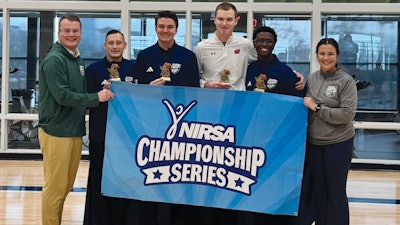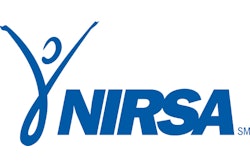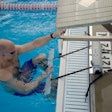
When William Wasson and 19 of his colleagues gathered at Dillard University in New Orleans for two days in February 1950 to create what eventually became known as NIRSA, they wanted to share knowledge, exchange ideas and make connections with others who were promoting intramural sports on their respective campuses.
A full 75 years later, the organization that grew out of that inaugural meeting continues to make intramural sports programs, along with dozens of club sports, major priorities. That said, each program has its own quirks and responsibilities, and ensuring they operate smoothly and efficiently can be an overwhelming task — especially for campus recreation professionals new to the industry.
“The industry is changing,” says Nick D’Amato, senior assistant director for sports programs for Recreation & Wellbeing at the University of Massachusetts. “It used to be that most entry-level professionals came from graduate assistantships within campus rec, and now there are a lot more people going straight from undergrad into professional roles — or coming over from private recreation and fitness spaces, or other parts of the university. What we do is not rocket science, but there are tricks of the trade and other resources out there to help smooth that transition.”
NIRSA offers multiple ways to not only assist its members in intramural and club sports operations but also help those programs thrive.
From the Intramural and Club Sports Institute and tournament staff experiences via the NIRSA Championship Series to specific handbooks and on-demand virtual courses, the association offers camaraderie, support and learning opportunities for professionals who work at all levels in the intramurals and club sports realms.
While these components of campus recreation often are referred to collectively, there are significant differences between the two.
“I love to think of intramural sports as parks and rec leagues for college campuses. You’re signing up with some of your friends, there’s not usually a practice requirement and it’s pretty accessible for people,” says Carissa Short, coordinator of recreation sports for the Centers at the University of Missouri-St. Louis and chair of NIRSA’s 2025 Intramural and Club Sports Institute Planning Committee. “Club sports are a little bit different. There’s a higher skill level required, typically there’s a tryout process and they are aligned with other student organizations on campus — with a fundraising requirement and a club president.”
What follows are examples of three ways NIRSA promotes intramural and club sports, from the local level to the national stage.
NIRSA Intramural and Club Sports Institute
Every two years, the NIRSA Intramural and Club Sports Institute, presented by Fusion, convenes to provide education and networking opportunities for campus recreation professionals working in those areas. It offers three main educational tracks: intramural sports, sports clubs and middle management.
The event — to be held this year in Kansas City, Mo., June 24-26 — is reflective of trends, according to Short. For intramurals, a current topic of conversation is adding new sports and determining their modalities. Many campuses have added pickleball and esports to their slate of programming, for example, a notable shift from the team-based activities that have historically characterized intramural sports.
“On the club sports side, risk and leadership are traditionally big topics, but fundraising seems to be a hot topic this year for professionals,” Short says. “We can’t just shell out all the money clubs need to rent big charter buses and hotel rooms so they can travel to tournaments. A lot of campuses are starting to look at what their athletics department is doing and how that relates to fundraising for club sports.”
NIRSA Championship Series
For many club sports teams in basketball, flag football, soccer and tennis, the season culminates in the NIRSA Championship Series — a platform for college recreation sports staff and participants to compete, coordinate, officiate and connect with peers from other schools. Campuses volunteer to host regional and national championships in various sports, thereby fostering professional development, too.
“We’re always looking for more host schools,” says Kristofer Newsome, assistant director for sport clubs and risk management at the University of Central Florida, as well as chair of the NIRSA Championship Series. “The more places we have, the more people we can touch.”
Newsome suggests that campus recreation professionals interested in volunteering to either work at or host a NIRSA Championship Series event plan on attending a regional competition and take it all in. “It’s a hectic weekend, but it’s fun,” he says, “because you’re interacting with others in your field and giving young people a chance to continue playing the sports that they loved growing up.”
Recreation 101 Virtual Courses
The association’s evergreen and on-demand Recreation 101 Virtual Courses are designed to give NIRSA members the opportunity to establish a core, introductory knowledge base in specific areas. Last year, the association launched four new courses — including Introduction to Collegiate Intramural Sports 101 and Introduction to Collegiate Sport Clubs 101 (sponsored by the United States Tennis Association).
Modules for the intramural sports course cover strategies for event planning, facility management, team recruitment and student development, as well tournament formats, officiating, equipment guidelines and more. The sport clubs course focuses on finances and funding, licensing and national body governance, plus core approaches to student development, event planning, risk management and more.
“Anything that we can do to make young professionals feel more confident, feel like they have the right information and skills, is going to help them avoid burnout,” says D’Amato, who also is one of five instructors for the intramurals course. “The gift — and kind of the curse — of NIRSA is that it is very heavily volunteer-run. It’s great that it’s an organization run by people who are actually on the ground, doing the things that we’re talking about. The curse part comes in because all of us are doing this kind of work on top of our 9-to-5 jobs. But one of the reasons I’m willing to be involved is because I had a lot of mentors in this field. And I just want to pass that on.”






































